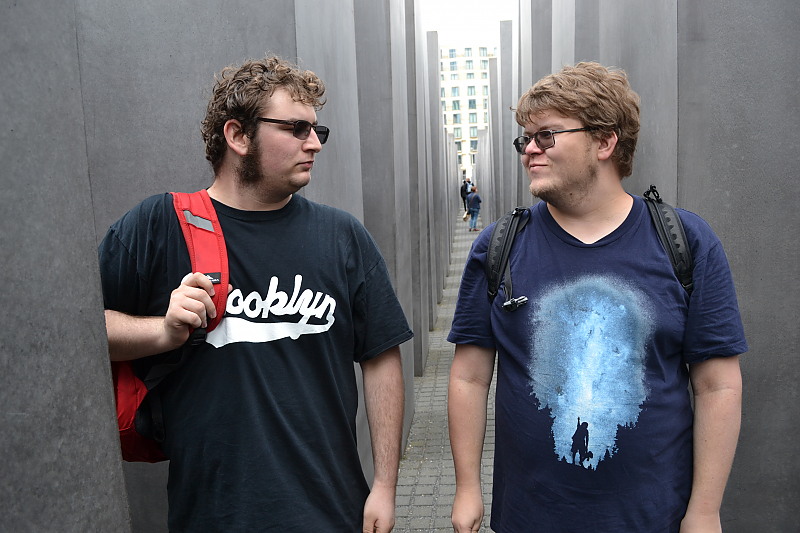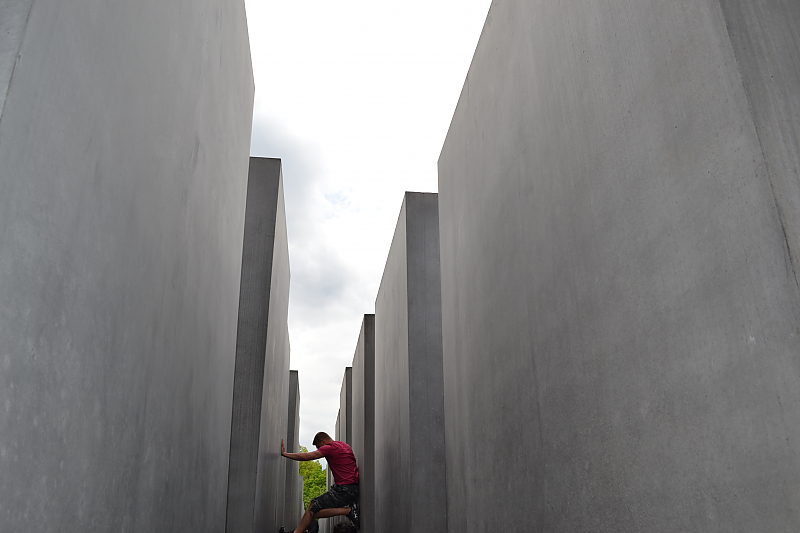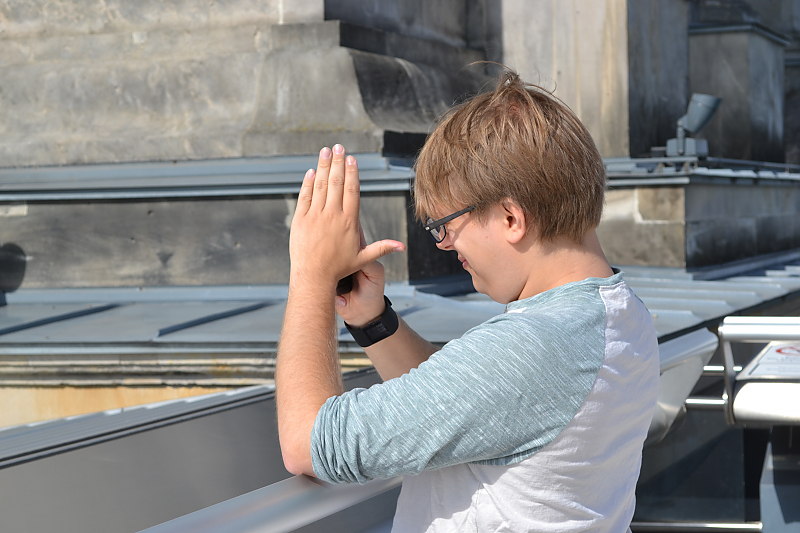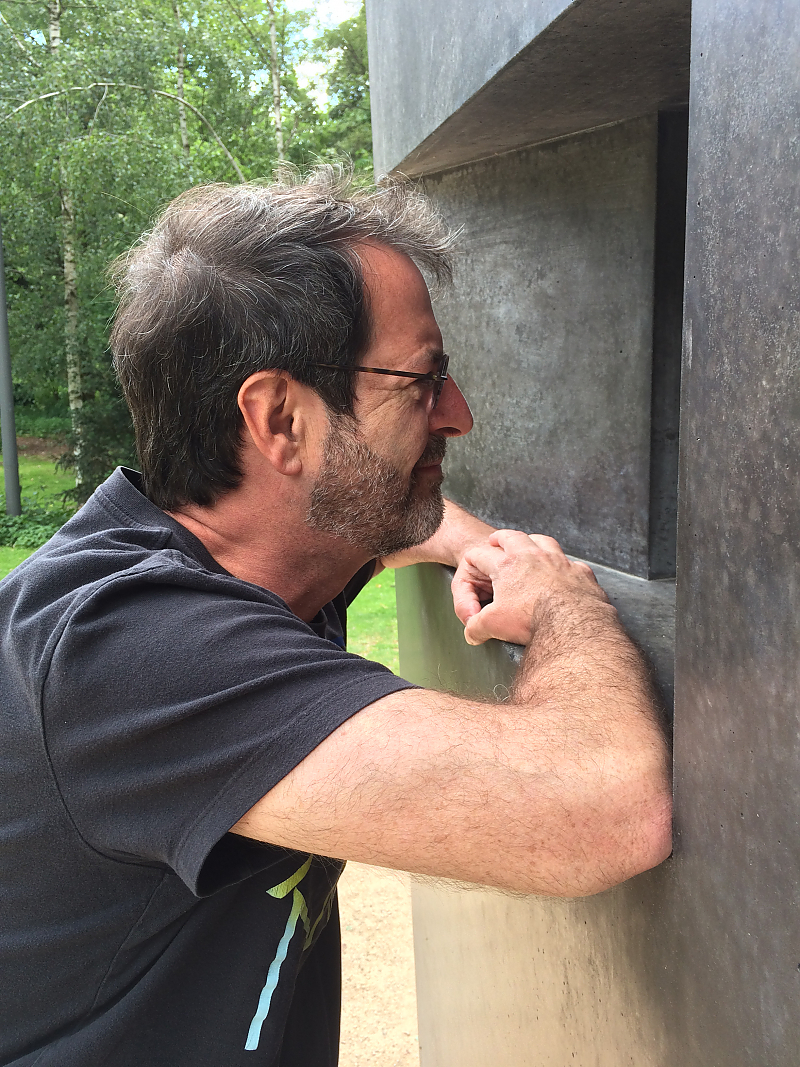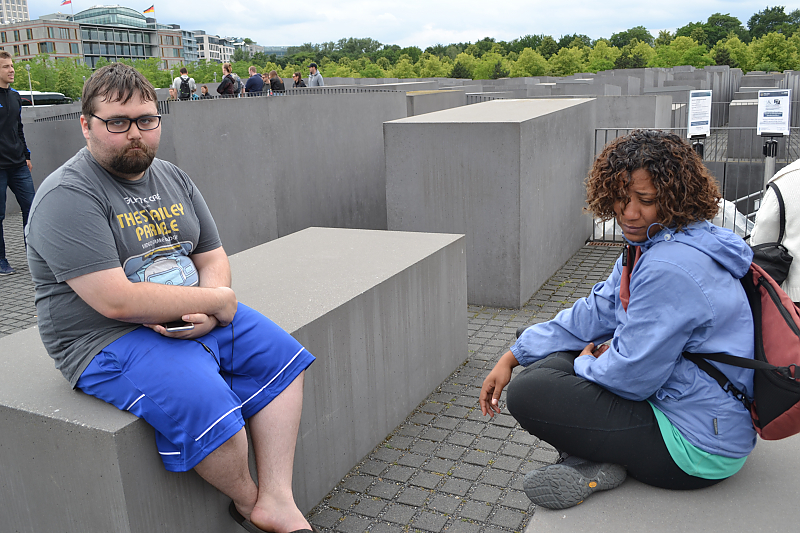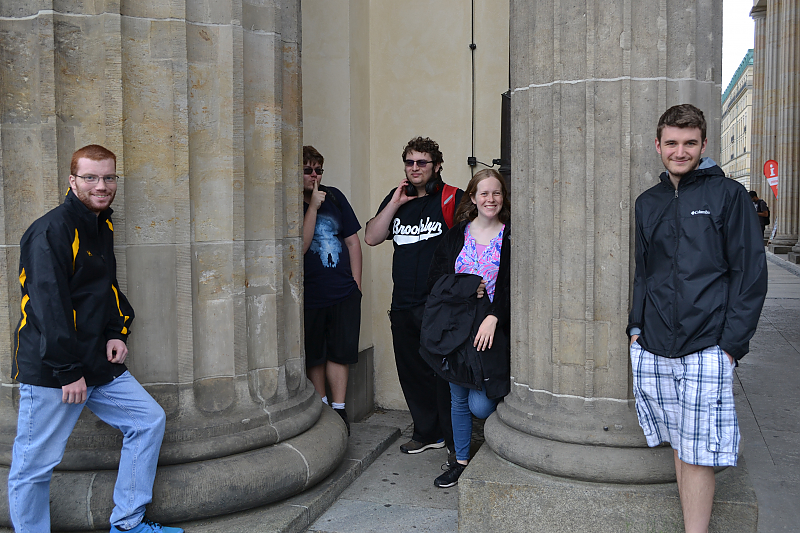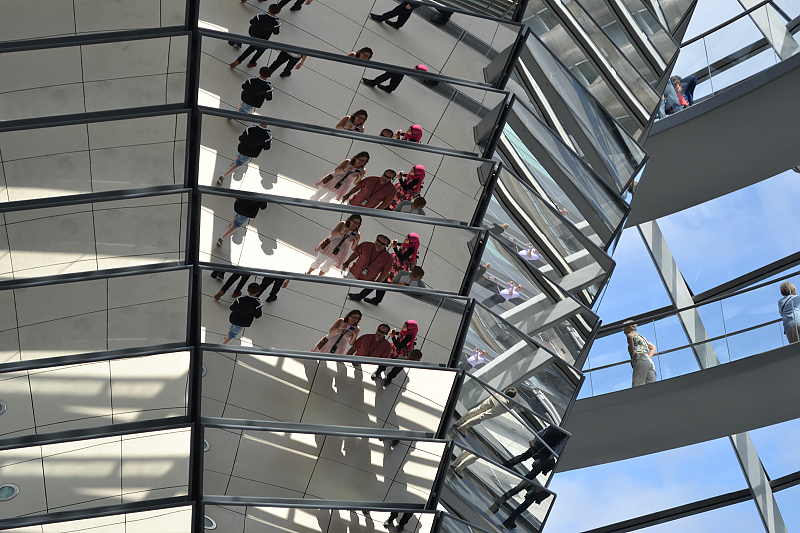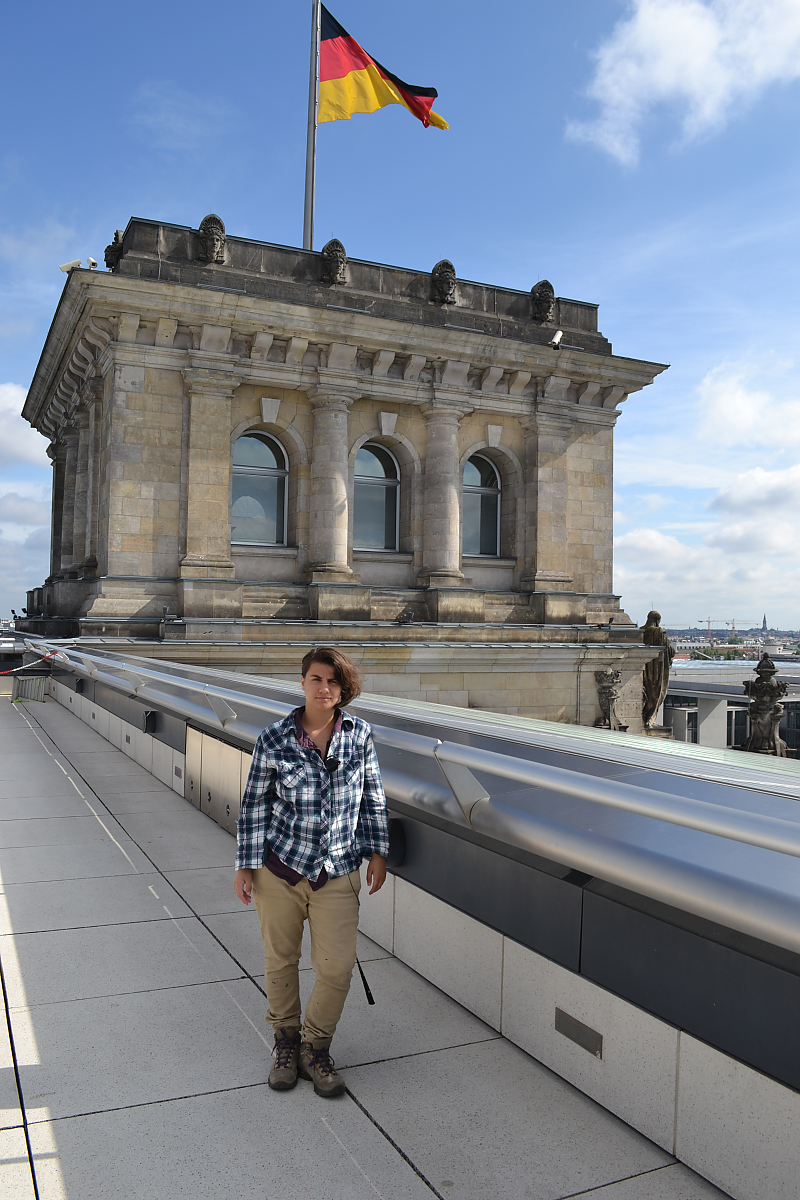Landmark Students Finish Up Their Time in Berlin
One of the most exciting aspects of the study abroad trip is watching students become more and more confident in navigating in a new city and culture--particularly in a city as vibrant and multicultural as Berlin. When we get pockets of time off to explore, the students tend to jump on the subway in pairs or small groups and head off to see another part of the city. Others explore on foot, and many find they have walked 6-7 miles by the end ofthe day. When they return, they share their stories of what they've found and experienced and we all benefit from our growing familiarity with the city. The group moves around on crowded subways with ease, and students are quick to support each other.
For the final project due on Friday morning, students are focusing on how Berlin has memorialized WWII by choosing five pictures from the various memorials we have visited. Their task is to go beyond description and into a deeper analysis of the process of memorialization that the image represents: What is being memorialized? How is it being memorialized? What is the design of the memorial? How well does it work? What is problematic or missing from the memorial? And so on. As an example, last night Mike showed me a picture of brochures for a memorial that were only in German, and was working on the implications of how accessible a memorial was in terms of the translations of the information that is available to visitors. Sam Garcia has talked about the use of negative space in the memorials and how potent empty space is in terms of symbolizing all that is missing or suppressed and all who were lost as a consequence of the war. As a humanties course, students are delving into other disciplines as they do this project, and consider architecture, sculpture, art, archeology, social science, etc. and work to articulate in their own words what they are learning.
To add a layer of complexity, students are also being asked to explain why they photographed an image from a memorial in a particular way or from a particular angle, etc. Students can work in pairs on this project, as several are doing, and can also use images from the internet of the memorials. This meta approach to thinking about how we make sense of and honor history is something that students will be able to reference for the rest of their lives.
Our Usual Gathering/Briefing in the Lobby at CIEE Prior to Leaving on a Field Trip
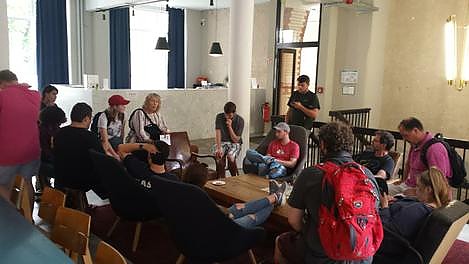
Sam Calle's Picture of the Holocaust Memorial
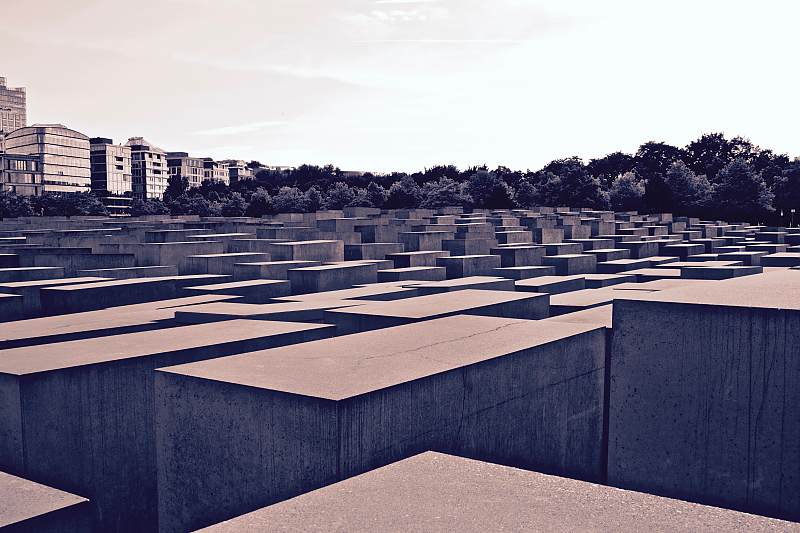
Sam and Mike at the Holocaust Memorial
Rory at the Reichstag
Andy at the Memorial to the Homosexuals
Geo and Meg After Visiting the Holocaust Memorial (to the Murdered Jews of Europe) Information Center
At the Brandenburg Gate
At the Reichstag
Caroline at the Reichstag
